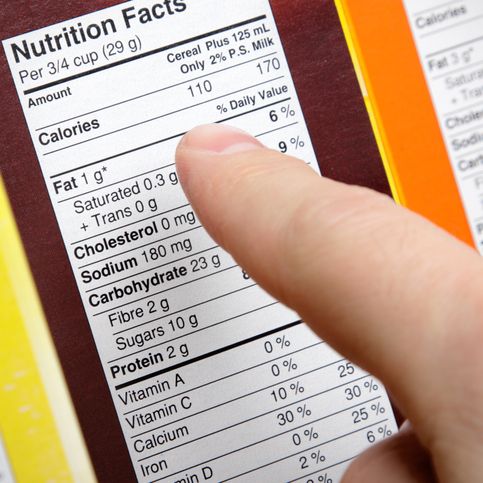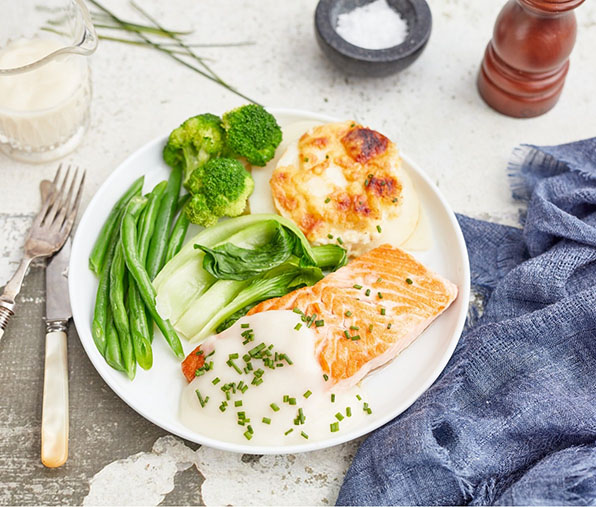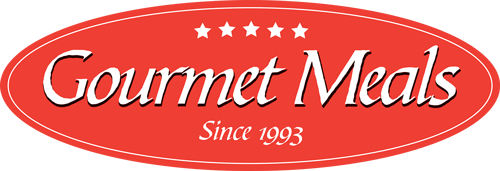
How to Read Nutrition Labels on Frozen Meals
A simple guide to making healthier choices with every meal
Reading nutrition labels can feel like decoding a puzzle—but understanding what’s in your food is one of the best ways to take charge of your health. For seniors who rely on frozen meals for convenience, reading the label isn’t just a good habit—it’s essential to ensure you're getting the nutrients you need without the extras you don’t.
At Gourmet Meals, we believe informed choices lead to healthier lifestyles. Whether you're managing a health condition or simply want to make more balanced decisions, here’s a straightforward guide to reading and understanding nutrition labels on frozen meals.
Where to Start: The Nutrition Information Panel
The Nutrition Information Panel (or NIP) is where you’ll find most of the important data on any frozen meal. Here's what to focus on:
1. Serving Size and Servings Per Pack
Check if the meal is one full portion or if you’re meant to divide it into two. A product might appear low in calories—but only if you're eating half of it. Gourmet Meals are single serve to eliminate confusion.
2. Energy (kilojoules or calories)
This number tells you how much energy the food provides. For most seniors, balancing energy intake with activity levels is important to maintain a healthy weight.
3. Protein
Protein is essential for muscle maintenance and strength, especially as we age. Look for meals with at least 15–20g of protein per serve—options like Roast Chicken Breast are great protein-rich choices.
4. Total Fat and Saturated Fat
Some fat is necessary—but too much saturated fat may affect heart health. Aim for lower saturated fat numbers, and look for heart-healthy fats from fish or plant sources.
5. Carbohydrates and Sugars
Complex carbohydrates are great for energy. Watch for added sugars, which are best kept to a minimum (under 10g per serve is ideal).
6. Fibre
Fibre helps keep digestion moving and supports gut health. Many seniors don’t get enough. Meals with whole vegetables and legumes, like the Coconut Dahl, are typically good fibre sources.
7. Sodium (Salt)
Salt content is one of the most important things to check. Many frozen meals are high in sodium, which can affect blood pressure. Look for meals with less than 400mg of sodium per 100g when possible. Gourmet Meals offers a wide selection of low salt options.
Ingredients List: What’s Really Inside
The ingredients list is a great tool to assess food quality. Items are listed in order of quantity—from most to least. Look for:
- Ingredients you recognise (less processing is better)
- Whole foods: chicken breast, vegetables, legumes, grains
- Fewer additives and preservatives
Meals made with real ingredients and cooked fresh before freezing—like those from Gourmet Meals—are typically a healthier option compared to ultra-processed alternatives.
5 Quick Tips for Healthier Frozen Meal Choices
1. Don’t just look at calories – High nutrition is more than low kilojoules
2. Check sodium first – Especially if managing blood pressure
3. Aim for balance – Protein, carbs, vegetables, and a moderate portion of healthy fats
4. Avoid hidden sugars – Watch for ingredients like glucose syrup, maltodextrin, or cane sugar
5. Stick to whole ingredients – Shorter, simpler ingredient lists are a good sign
Why This Matters for Seniors
Nutrition needs change as we get older. You may need fewer calories, but more of certain nutrients like protein, calcium, and fibre. Being label-savvy can help prevent health complications and improve your energy, digestion, and overall wellbeing.
At Gourmet Meals, all our products are clearly labelled with easy-to-read nutrition panels, serving sizes, and dietary symbols. Whether you're looking for gluten-free, low fat, or diabetes-friendly options, we take the guesswork out of eating well.
FAQs: Understanding Nutrition Labels
Q: What’s the difference between ‘per serve’ and ‘per 100g’?
"Per 100g" helps compare products evenly. "Per serve" tells you the nutrition for the portion you're eating. Use both to get a full picture.
Q: Is all sugar bad?
Not at all. Natural sugars (from fruit or dairy) are fine in moderation. It’s added sugars you want to limit.
Q: How much sodium is too much?
Under 400mg per 100g is considered a better choice for those watching blood pressure. Look for “low salt” on the label.
Q: Can frozen meals still be healthy?
Absolutely—especially when they’re made from fresh, wholesome ingredients and designed with dietary needs in mind, like ours at Gourmet Meals.
Eat Well. Know More. Feel Better.
Taking a few extra seconds to read the label can make a big difference to your health. And with Gourmet Meals, you can be confident that what’s on the label reflects real food, real flavour, and real nutrition.
Explore the full menu today and make informed choices that suit your lifestyle.
Tags: Reading Nutrition Labels, How To Understand Nutritional Facts, Nutritional Labels Explained, How To Read Nutrition Labels, Meals Delivered, Nutritious Meals Delivered, Portion-controlled Meals, Meals High In Protein, Meals High In Fibre, Gluten Free Meals Delieverd







